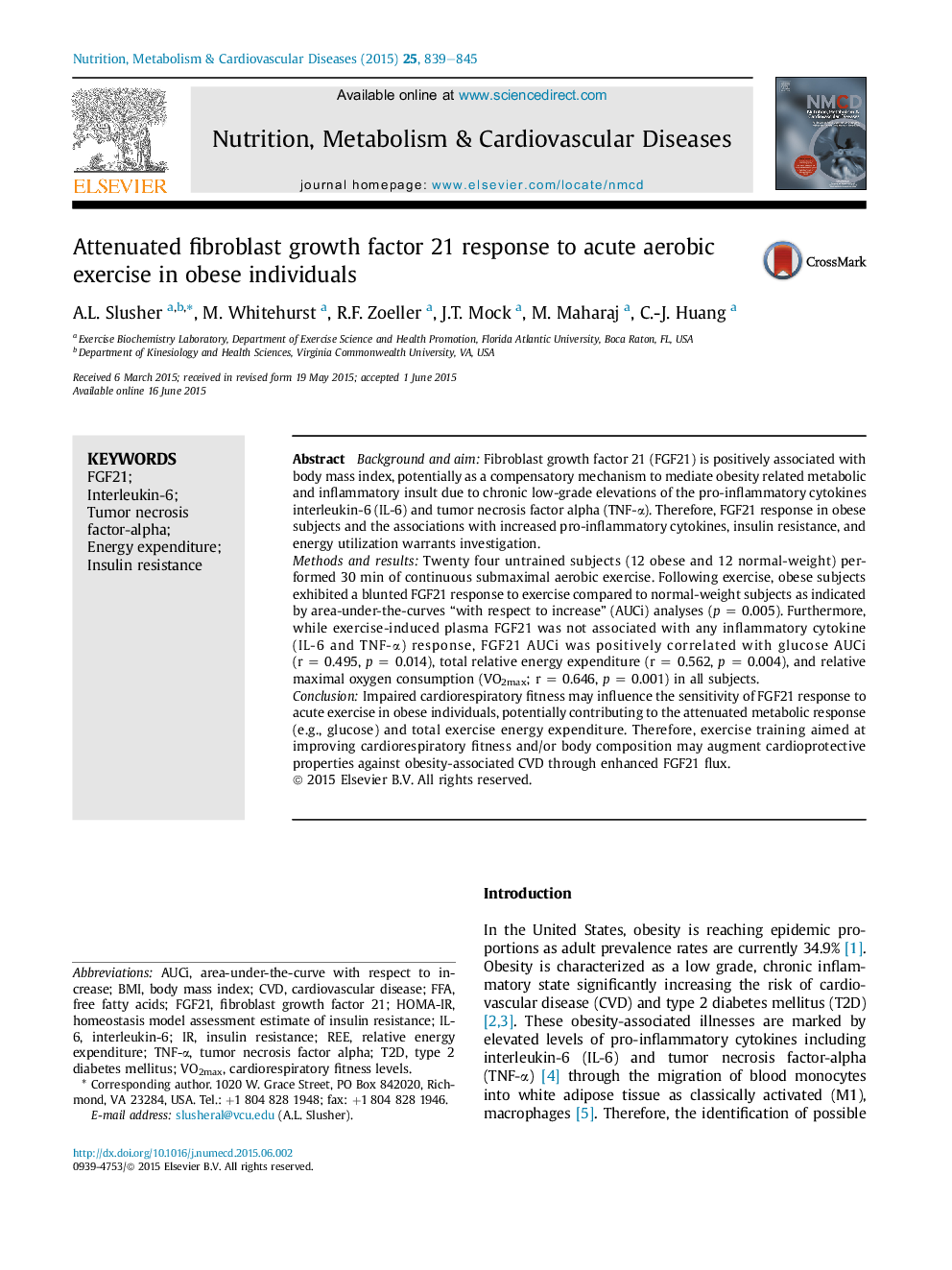| Article ID | Journal | Published Year | Pages | File Type |
|---|---|---|---|---|
| 5996478 | Nutrition, Metabolism and Cardiovascular Diseases | 2015 | 7 Pages |
â¢Obese subjects exhibited an attenuated FGF21 response following acute exercise.â¢FGF21 response was positively correlated with cardiorespiratory fitness levels.â¢Increased exercise-induced FGF21 flux may modulate glucose and energy metabolism.â¢Exercise training may reduce the risk of CVD through enhanced FGF21 flux.
Background and aimFibroblast growth factor 21 (FGF21) is positively associated with body mass index, potentially as a compensatory mechanism to mediate obesity related metabolic and inflammatory insult due to chronic low-grade elevations of the pro-inflammatory cytokines interleukin-6 (IL-6) and tumor necrosis factor alpha (TNF-α). Therefore, FGF21 response in obese subjects and the associations with increased pro-inflammatory cytokines, insulin resistance, and energy utilization warrants investigation.Methods and resultsTwenty four untrained subjects (12 obese and 12 normal-weight) performed 30 min of continuous submaximal aerobic exercise. Following exercise, obese subjects exhibited a blunted FGF21 response to exercise compared to normal-weight subjects as indicated by area-under-the-curves “with respect to increase” (AUCi) analyses (p = 0.005). Furthermore, while exercise-induced plasma FGF21 was not associated with any inflammatory cytokine (IL-6 and TNF-α) response, FGF21 AUCi was positively correlated with glucose AUCi (r = 0.495, p = 0.014), total relative energy expenditure (r = 0.562, p = 0.004), and relative maximal oxygen consumption (VO2max; r = 0.646, p = 0.001) in all subjects.ConclusionImpaired cardiorespiratory fitness may influence the sensitivity of FGF21 response to acute exercise in obese individuals, potentially contributing to the attenuated metabolic response (e.g., glucose) and total exercise energy expenditure. Therefore, exercise training aimed at improving cardiorespiratory fitness and/or body composition may augment cardioprotective properties against obesity-associated CVD through enhanced FGF21 flux.
